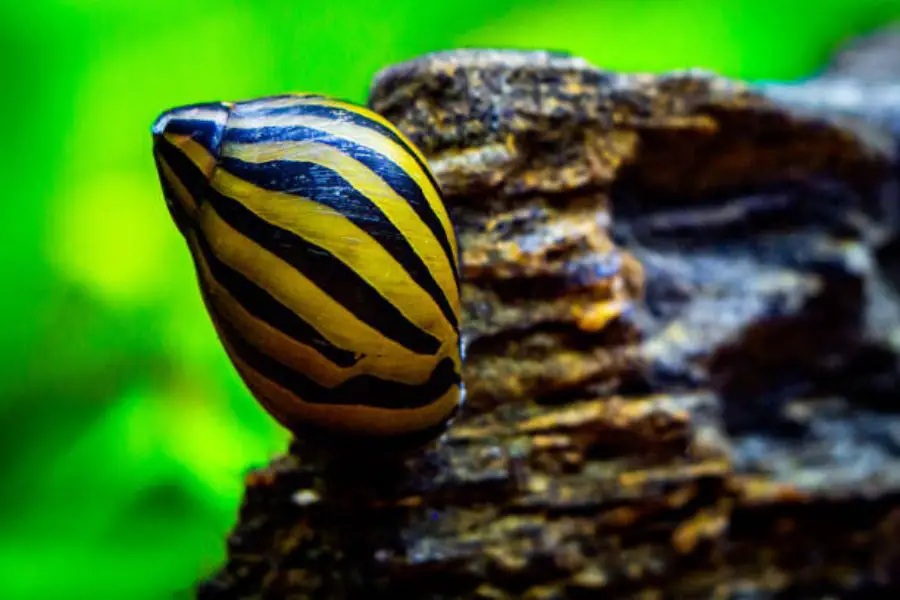Welcoming saltwater nerite snails into my aquarium has been a rewarding experience, bringing both visual appeal and practical benefits.
These unique gastropods are renowned for their algae-eating abilities and distinctive shells, making them valuable members of the marine cleanup crew. Here’s an in-depth look at caring for nerites based on my personal experiences and insights.

Snail Stats – Size, Life Span, and More
Jump To
In observing saltwater nerite snails in my tank, I’ve encountered a diverse range of captivating characteristics.
Understanding their modest size, distinct shell patterns, and a lifespan of 1 to 3 years has been crucial for providing appropriate care.
Each species, from Tiger nerite with its black and gold stripes to the Red tracker nerite with crimson spots, adds a unique visual dimension to the aquarium.
While witnessing females laying small white egg capsules, a noteworthy revelation emerged—these eggs, laid in freshwater, won’t hatch in the tank.
The larvae necessitate brackish water for survival, underscoring the importance of replicating their natural estuarine habitat for successful reproduction.
A Natural Algae Eater
Nerites’ role as natural algae eaters has significantly contributed to maintaining a pristine aquarium environment.
Their voracious appetite for various nuisance algae varieties, including hair, green spot, and diatom algae, makes them valuable members of the cleanup crew.
Understanding their cleaning prowess and limitations has been essential, as they typically won’t touch coralline algae, cyanobacteria, or hair algae.
Seawater-Only Snails
A crucial aspect of my nerite-keeping experience has been recognizing their exclusive need for marine environments.
Unlike some other snail species, nerites cannot survive in freshwater or even brackish conditions. Their adaptation to thrive in full marine systems emphasizes the importance of precise attention to water parameters.
Keep Their Environment Stable
Nerites, I’ve learned, are sensitive to environmental shifts. Maintaining stable water conditions, including salinity, pH, and temperature, is paramount to preventing stress.
Implementing ample filtration, protein skimming, and regular partial water changes contribute to sustaining high water quality. Stable water movement and oxygenation are also critical considerations.
Give Them Grazing Room
As tireless grazers, nerites require ample room to roam and surfaces to scrub. Providing a variety of surfaces, including rockwork, decor, and driftwood covered in algae growth, allows them to showcase their cleaning prowess.
Selecting peaceful tankmates and ensuring open sandy spaces are available are crucial aspects of their habitat.
What Do Nerites Eat?
Supplementing their diet with a variety of foods, including algae-based supplements, fresh vegetables, slow-release calcium sources, and quality pellet foods, ensures a well-rounded nutrition.
Understanding their natural grazing habits and avoiding overfeeding is essential to prevent water fouling.
Troubleshooting Common Nerite Snail Issues
Why are my nerites dying?
Sudden nerite deaths often stem from improper water conditions. Testing and correcting pH, ammonia, nitrite, nitrate, salinity, and temperature values outside acceptable marine ranges is crucial.
Why do nerites climb out of the water?
Nerites may crawl above the waterline to breathe air, and this is normal as long as they return to the water promptly. Ensuring sufficient oxygen levels and flow is essential.
Why did my nerites stop moving?
Lethargy and inactivity can signal distress from poor water quality, starvation, incorrect salinity, or disease. Addressing husbandry issues and isolating sick snails is necessary.
Why are nerite shells eroding?
Eroding shells indicate a lack of calcium or acidic conditions. Supplementing their diet with calcium sources and maintaining pH above 8.0 is crucial.
How can I get rid of nerite eggs on my tank?
Unfortunately, the white eggs won’t hatch and must be manually removed. Scrape them off with a clean razor or algae pad—they are hard and harmless to the tank.
Ready to Welcome These Workers?
While saltwater nerite snails demand some specialized care and maintenance, they undeniably earn their keep by efficiently clearing away unsightly algae growth.
Their unique patterns and behaviors make them not just workers but also fun and engaging additions to the marine aquarium.
With a stable, well-maintained marine habitat and careful research into their specific care requirements, a small group of nerites can thrive for years, showcasing their constant dedication to polishing rockwork, decorations, and tank surfaces.
Read Next: Will Nerite Snail Eggs Hatch in Freshwater?
